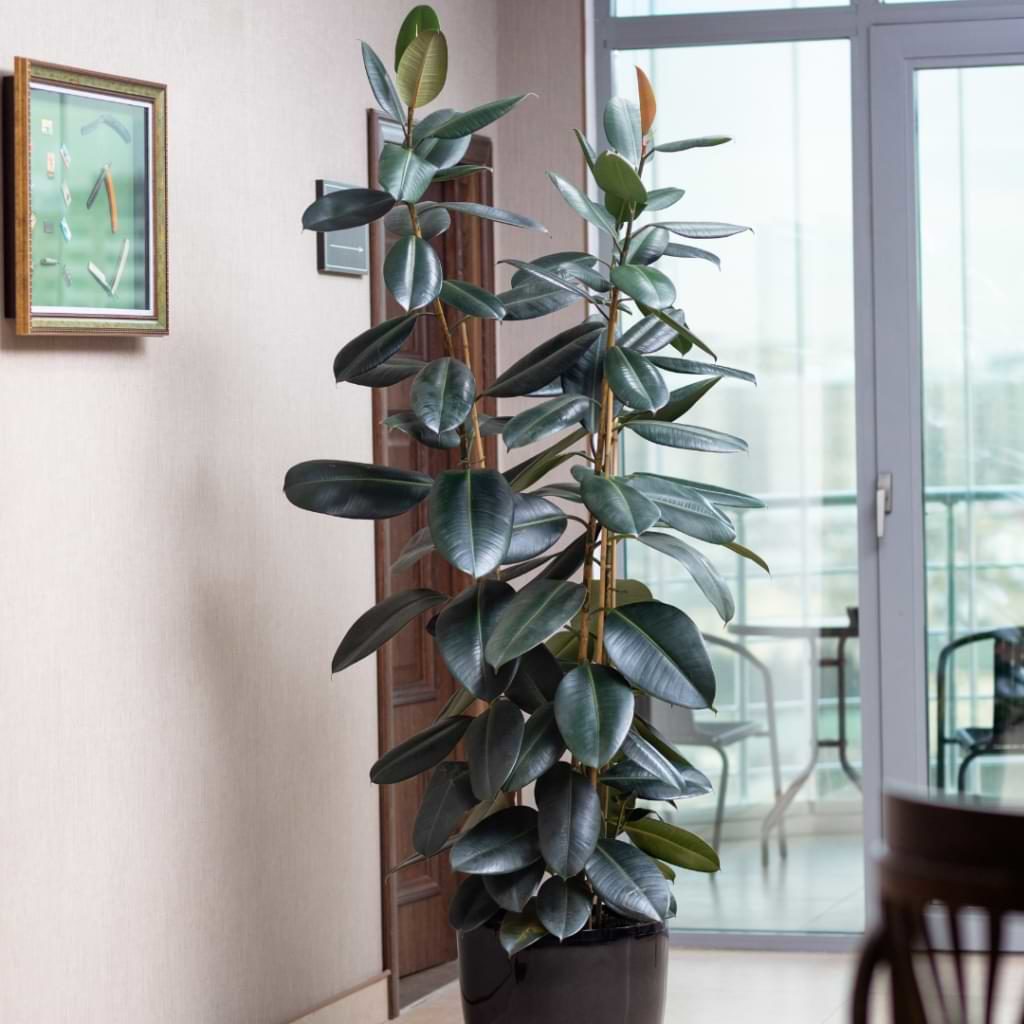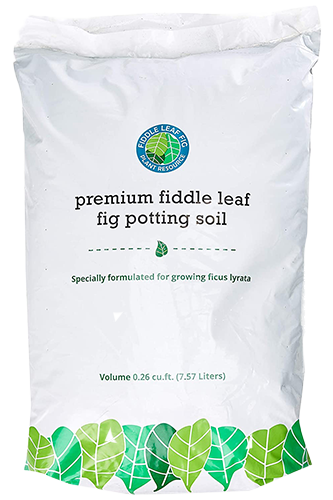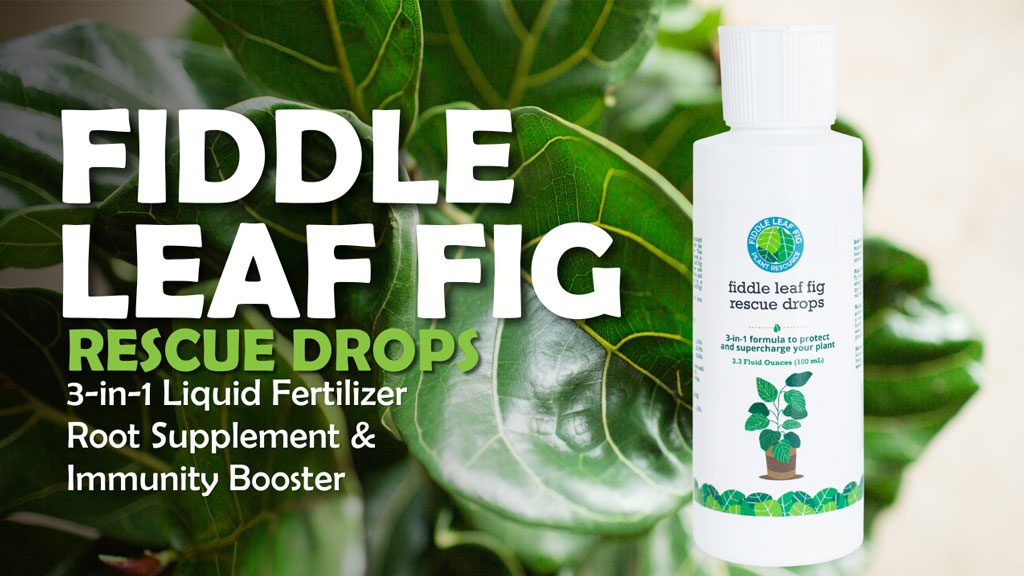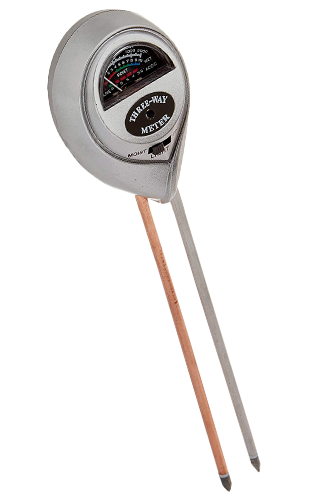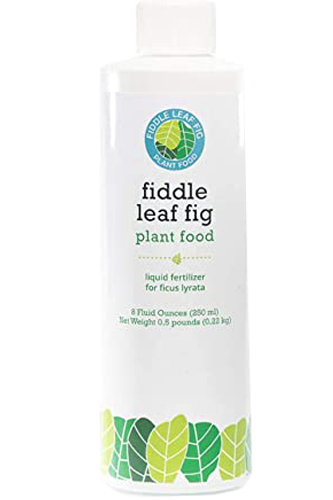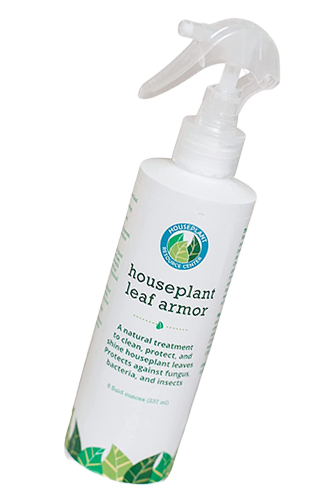How to Care For a Rubber Tree or Ficus Elastica Plant
Ficus elastica, commonly known as the rubber tree, is a beautiful tropical tree well-suited to growing indoors. It’s often thought to be a more easygoing cousin to the fiddle leaf fig and is prized for its glossy, oval-shaped leaves that come in deep-burgundy or even pink, cream, and green variegated varieties.Rubber plant care is actually quite simple for an indoor tree, and if you’ve had a fiddle leaf fig or other Ficus trees before, you should have no trouble caring for a rubber tree! But even beginners can easily take care of this stunning houseplant.
Where Does Ficus Elastica Come From?
The rubber tree plant originated in tropical areas of South and Southeast Asia, including India, Myanmar, China, Nepal, Malaysia, etc. In the wild, Ficus elastica can grow to over 60 feet tall and can grow long aerial roots to help anchor it to the ground.
Today, it’s a popular indoor ornamental and can grow up to 8 feet tall inside. A similar tree to the Ficus Elastica is the Ficus Tineke, which is just a more compact version of the elastica. Another popular variation is the Ficus Elastica “Robusta,” which has beautiful large leaves.
Does Rubber Come From Rubber Trees?
Though the latex sap of Ficus elastica has been used to make rubber, it is not widely used to make commercial rubber. Most rubber we use comes from Hevea brasiliensis, a tree from a completely different genus.
Where to Buy Ficus Elastica
Ficus elastica is fairly common in the gardening section of large home improvement stores like Lowe’s, Home Depot, and IKEA, so you might get lucky and find one there. Even Costco carries them from time to time for great prices! Many places will list this tree by it’s common name (rubber tree), so keep an eye out and I’m sure you’ll find one!
You can also find this beautiful indoor plant in most neighborhood nurseries that carry indoor ornamentals.
This is also a pretty easy plant to find online through stores like The Sill, Amazon, Etsy, and even eBay and Facebook Marketplace.
However, if you’re looking for a variegated rubber tree (Ficus elastica variegata), you might have to look a little harder! (Though these are far easier to find than other variegated ficuses like Ficus lyrata variegata) While these do pop up in stores from time to time, you might have much better luck online. You can also set up keyword alerts on eBay so that when a variegated rubber tree goes up for bid, you’ll get a notification!
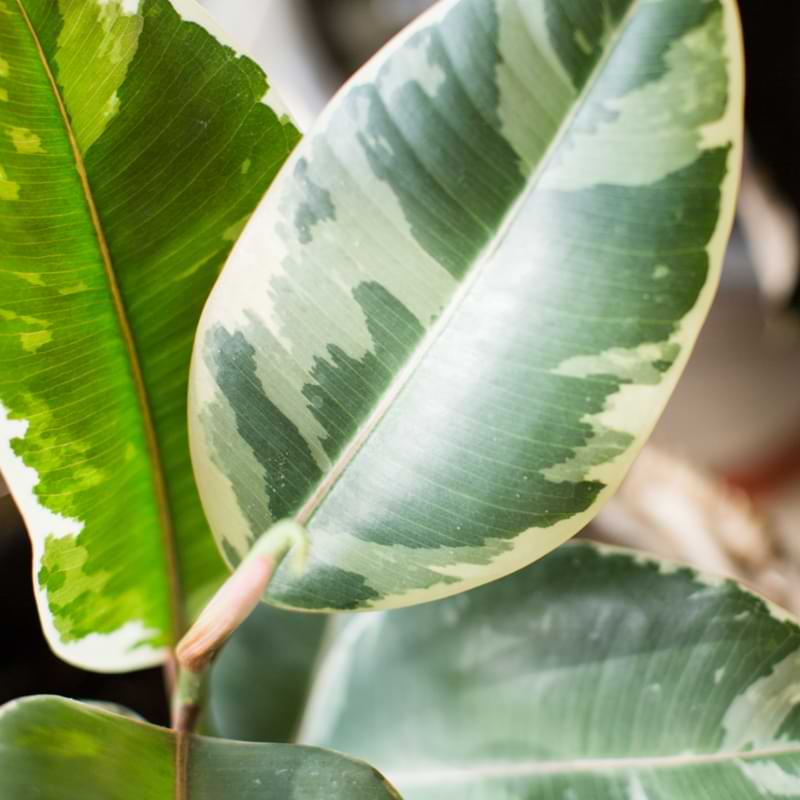
Ficus Elastica Care for Ficus Lovers
Ficus elastica care is pretty straightforward, especially if you’ve had another ficus or tropical plant before. Here’s what you need to know:
Soil and Potting
Ficus trees—including Ficus elastica—do not like to sit in water, so a well-draining soil or fast-draining potting mix that stays well-aerated is essential. A nice, loose cactus mix can do the trick, but we recommend something a little more specialized for long-term health.
Fiddle Leaf Fig Soil was specifically created for ficus trees and provides the perfect balance of drainage and water retention while containing the right nutrients to promote strong growth and the right pH for optimal health and nutrient absorption.
The right pot is just as important as the right soil, so make sure to find one with proper drainage holes to ensure your plant has the best chance to thrive.
Choose a pot with great drainage that’s 2-3 inches larger than the root ball of your rubber plant. Plan on repotting every year or so to allow your roots more room to grow, and to refresh the soil.
Light
As tropical plants, rubber trees like plenty of bright, indirect sunlight in order to grow optimally. The Ficus elastica plant can tolerate some direct sunlight, so some bright light is acceptable but not too much, it should be placed somewhere it gets no more than 30 minutes of direct sunlight each day.
Place your Ficus elastica in an east-facing window or near a south- or west-facing window where it will get lots of bright, indirect light, but where the sun’s rays won’t shine directly on the leaves. (This can cause leaf scorch. No good!)
North-facing windows usually don’t provide enough light to keep a rubber tree happy, so avoid those unless you have no other option. If you aren’t able to provide sufficient natural light for your rubber tree, you may want to look into investing in some grow lights.
We love these full-spectrum grow bulbs that you can put in regular light fixtures for the perfect compromise between light and aesthetics. Give them a try!
Whatever your plant’s light source, make sure to give your rubber tree a quarter turn every week or so to give all the leaves plenty of light exposure. This will also prevent your plant from leaning toward the light or growing in a lopsided shape.
Water
Water your Ficus elastica when the top few inches of soil feel dry to the touch or when a moisture meter reads 3-4.
While the finger test can work well when the soil is very well aerated, we highly recommend using a moisture meter because it gives you a much more accurate assessment of the soil’s moisture level and a better idea of what’s going on inside the root ball, not just the top few inches of soil.
When it’s time to water, slowly add water to the top of the soil until it just starts to drain out the bottom of the pot. Let the pot drain in the sink, shower, or tub for an hour or so, or empty the drainage trays immediately so your plant isn’t sitting in water.
You should end up watering your Ficus elastica every 7-14 days. If you find yourself watering more than that, you may be watering too lightly. If your rubber fig tree’s soil takes longer than that to dry out, you might have a drainage issue.
In addition to watering the plant directly, it may be a good idea occasionally mist the leaves with water or gently wipe down the plant’s leaves with a damp cloth.
Make sure that your pot and soil are draining correctly. If they’re not, it might be time to switch out the soil for something lighter or choose a different pot. You can also buy some time by aerating the soil to increase drainage.
As with many similar plants, the ficus elastica’s growing season typically occurs during the summer for most climates, during this time it is important to keep the soil moist and water at a pace that aligns with the growth of the plant. In the dormant season when the plant is growing less often, more infrequent watering makes sense at or around 2 or 3 times per month.
Tip: Let water sit out overnight so chlorine and other chemicals can evaporate. This will also allow the water to come to room temperature, which is more gentle on the roots than cold water. This can prevent root shock!
Temperature and Humidity
Ficus elastica thrives best in rainforest-like conditions, so the better you can replicate that indoors, the happier your plant will be!
Most indoor room temperatures (65-85 degrees Fahrenheit) will work well for a rubber plant.
As far as humidity goes, remember, you’re dealing with a tropical plant here. 40-50% humidity is best for a rubber tree, so if you live in a very dry area or use a lot of indoor climate control, you might want to provide a little extra humidity to keep your rubber plant’s leaves nice and supple.
You can do this by setting up a humidifier nearby or, if your plant is on the small side, placing the whole thing, pot and all, on a humidity tray. You can purchase one of these at a brick-and-mortar gardening store or online. You can also make your own DIY humidity tray by filling a shallow dish with pebbles and water and placing the plant on top. Just make sure your ficus’s roots don’t touch the water!
You can also try misting your rubber tree regularly, though keep in mind that this does carry some risks.
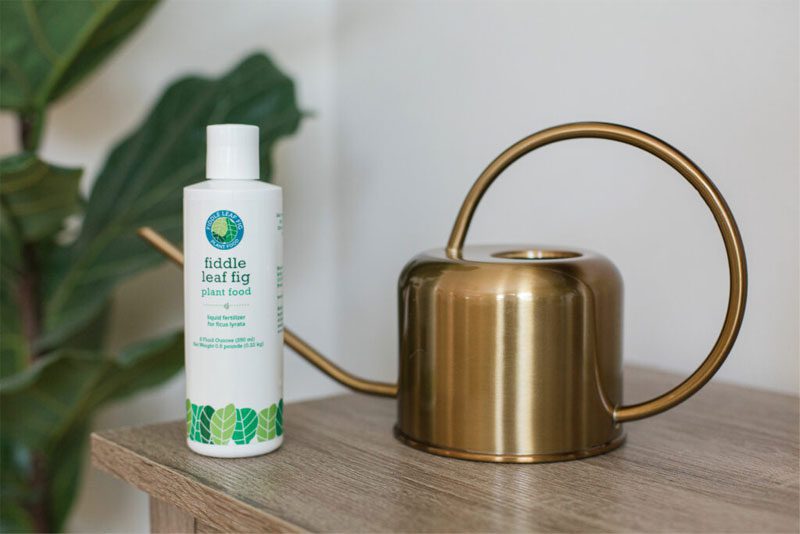
Fertilizer
The proper balance of nutrients is crucial for keeping a Ficus elastica healthy. Sufficient nitrogen, phosphorus, potassium, and other micronutrients like copper help ficuses grow large, shiny, beautiful leaves, sturdy stems that can support the plant, and a robust root system that readily absorbs water and nutrients from the soil.
In the wild, these plants receive a steady supply of nutrients from organic material that breaks down into the soil. But a potted plant can only access the nutrients present in the small amount of soil in its pot.
A Ficus elastica can easily use up all the nutrients in its potting soil within just a couple months, so it’s important to start fertilizing your plant after a month or two of bringing it home.
Choose a balanced liquid fertilizer that you can mix into your plant’s water. (We prefer this method to using slow-release fertilizers because it’s easier to control how much fertilizer your plant is getting and prevent overfertilization and chemical burn!)
We love Fiddle Leaf Fig Food because it contains the perfect blend of nutrients for ficuses. It’s also gentle enough to use with each watering so you don’t have to remember a fertilizing schedule! (The easiest solution is often the best one, right?)
Fertilize your Ficus elastica regularly during the spring and summer when it’s actively growing and less often in the spring and summer.
Pruning
Pruning serves both to keep your plant healthy by removing dead material and controlling your plant’s size and shape.
Regularly remove dead or damaged leaves so your Ficus elastica can redirect its energy toward healthy growth.
If your tree starts to grow into a lopsided or otherwise undesirable shape, if it’s just getting too big for your space, or if you need to remove some leaves and branches to increase airflow in the tree (very important for preventing conditions like powdery mildew), it might be time to prune.
To do this, we suggest planning your cuts ahead of time, because once you make a cut, you can’t take it back! Envision the overall shape you’re going for and mark the leaves/branches you intend to cut with colored strings or even sticky notes so you can make necessary changes before making cuts.
When you’re ready to actually prune, make sure to wear gloves to protect your hands from the tree’s irritating sap. It’s also a good idea to have a towel to catch the sap and maybe put an extra one on the floor to protect your flooring.
Using a sharp, clean knife or pair of pruning shears, carefully make your cuts. It’s best not to take more than 10% of your tree’s leaves at once to minimize shock (though rubber trees tend to be less susceptible to shock than Ficus lyrata, their more sensitive cousins). After pruning, make sure your tree gets plenty of light and prevent making any other environmental changes to allow your tree to recover more quickly.
Tip: The best time to prune a rubber tree is in the spring and summer when it’s most likely actively growing.
Propagation
This is a fun way to use the leaves and branches you prune from your rubber tree, or simply to clone your favorite plant to expand your collection or give as gifts!
To propagate with cuttings, select a young, healthy branch with 2 or 3 good leaves on it. Use a clean knife or shears to cut the branch, and watch out for the sap!
Place the cutting in a clear glass container of clean water and a little rooting hormone such as this Propagation Promoter and place it in a bright place. Change the water at least once every week and make sure to keep it topped off if it evaporates. Within a month or two, you should start to see roots forming on the end of the cutting, and a short while later, new leaves!
You can also propagate this plant by air layering, which requires a sharp, clean razorblade, sphagnum moss, and some plastic. You can cut into the branch you want to propagate without going all the way through, wet the sphagnum moss, place it around the cut, and secure it with the plastic. Keep the moss moist, and in a few weeks you should see root growth! You can then cut the branch off and plant it in its own pot.
When the roots are 2-3 inches long, plant your baby rubber tree in a small pot with drainage and fast-draining soil. Care for it like you would a mature tree. Simple!
Troubleshooting
While rubber trees tend to be fairly hardy, they’re still vulnerable to certain diseases, conditions, and household pests.
Legginess/stretched-out appearance: If your rubber tree appears stretched out and has a lot of space between leaves, your plant might be reaching for light! Try placing it in a brighter spot or getting a grow light to provide better lighting conditions.
Droopy leaves: Leaves can get droopy for a lot of reasons. The most common reason is thirst, so this could mean that your plant needs a drink! If the soil feels dry, go ahead and give your plant a good watering. Another common reason for drooping is root shock. If you just brought your Ficus elastica home, moved it to another location, repotted it, or if it’s experienced any other major environmental change, it might just be adjusting. Make sure it gets plenty of light and let it be. It should perk up in about a week!
Cold can also cause Ficus elastica leaves to droop, so make sure your plant isn’t near a drafty door, window, or vent.
Leaf drop: If your Ficus elastica occasionally drops one of its lower leaves, don’t worry. This is normal, healthy leaf drop, and your tree might just be done with its older leaves and redirecting energy toward new growth.
If your tree suddenly drops several leaves, you might have a bigger problem. First, make sure your tree isn’t under- or overwatered. If the soil is bone-dry, water it! If the soil is wet and soggy (again, a moisture meter will help you figure out what’s going on in the root ball where it really matters), you might need to improve your drainage. Make sure your tree is getting enough light and that it’s well away from drafts.
Finally, check the plant over for signs of disease or insect infestations.
Yellowing leaves: This usually indicates that the plant is overwatered, especially if only the lower leaves are yellowing and if they’re accompanied by soft brown spots.
You may be able to get away with letting the soil dry out and pruning off the damaged leaves. But if the plant sits in soaked soil for too long, it can develop fungal root rot, which can quickly kill the plant. If the yellowing or spotting continues to spread, repot the plant into fresh soil and go easier on the watering for a while. When you do water, use Root Supplement to help the roots heal and shield them from further infection. Make sure your tree gets plenty of light as well, because poor lighting can exacerbate issues caused by overwatering.
However, if the yellowing occurs all over the tree and the soil is dry, your tree is probably underwatered and you should give it a good soak!
Insects: Ficus elastica can fall prey to common household pests like spider mites, mealybugs and other species of scale, and fungus gnats.
If you notice lots of little spots, webbing, or sticky, clear residue on your rubber plant’s leaves, you might have an insect problem. Remove any insects you see manually with tweezers, a cotton swab soaked in alcohol, or with a jet of water from a kitchen syringe. You can also give your rubber tree a shower to dislodge some of the insects. A neem oil-based product is also a good all-purpose insect remover.
We also recommend using Leaf Armor spray regularly to fortify your rubber tree’s leaves against insects as well as dust, debris, and pathogens that could cause disease.
Ficus Elastica Care Made Easy!
Ficus elastica care isn’t as complicated as it seems at first blush. If you provide the right light and water when it’s thirsty, that’s 90% of the work!
The right resources and supplies can make plant care a lot easier, though.
Check out these tools and resources to make caring for your rubber tree a snap!

